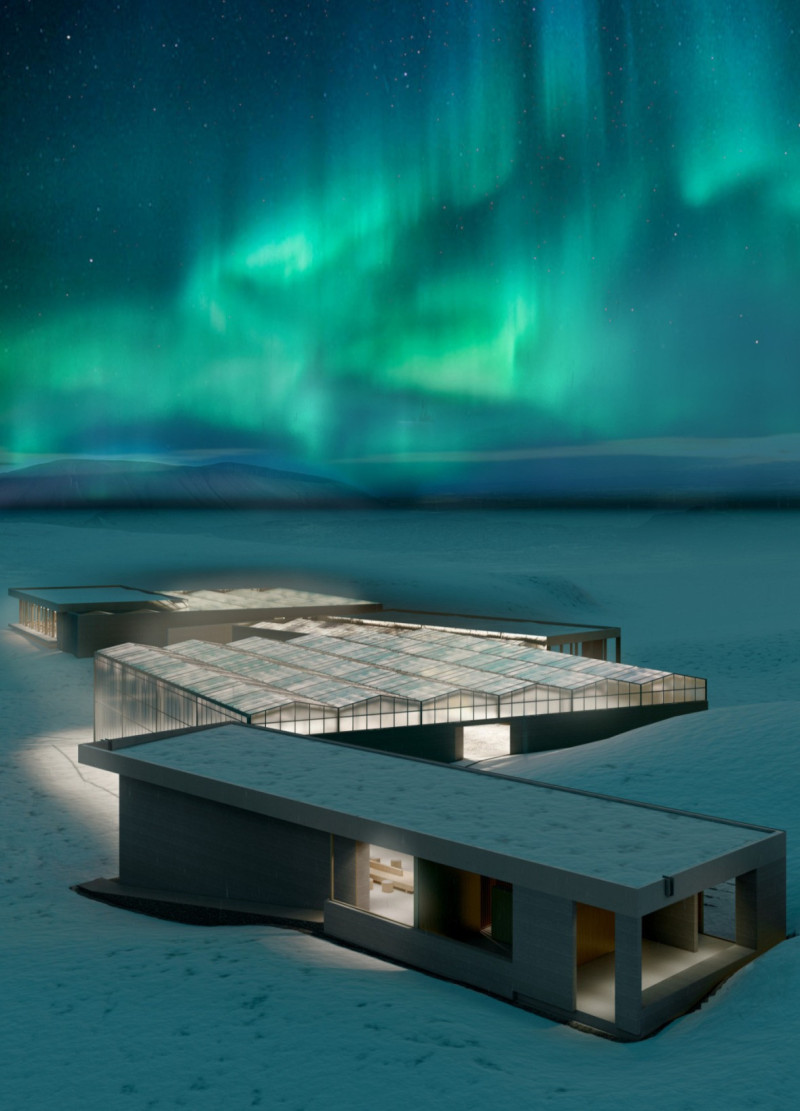5 key facts about this project
Station Mývatn is located in Iceland, thoughtfully designed to connect with the surrounding landscape. The development features a low-profile and horizontal layout that respects the expansive views of the Mývatn area. Its purpose includes providing various spaces for visitors, such as greenhouses, a restaurant, and areas for engagement. This design aims to enhance accessibility while blending into the natural environment.
Design Concept
The design places great importance on harmonizing with the site's topography. By adopting a horizontal form, it allows the architecture to maintain the integrity of the landscape without being intrusive. The pathways weave through the site, connecting different functional areas and inviting visitors to explore while appreciating the beauty of the natural surroundings.
Functional Organization
The layout consists of four key components, including three greenhouse spaces that serve various purposes. The entrance area offers easy access to both existing and new parking spaces along with luggage storage. This entrance acts as a gateway, directing visitors into multipurpose areas and promoting fluid circulation throughout the site while reinforcing the connection to the outdoor environment.
Greenhouse Integration
The integration of greenhouses plays a vital role, especially in relation to the restaurant. One greenhouse is dedicated to providing fresh vegetables, creating a sustainable model that supports local sourcing. This relationship enriches the dining experience, allowing visitors to feel connected to the growing process, as the interior space interacts closely with the greenery outside.
Materiality
Materials are selected to support the building’s design and its relationship with the landscape. Rammed concrete is used prominently for structural integrity, offering durability while blending with the natural setting. The warm, earthy tones of the concrete complement the surrounding environment, reflecting a commitment to a cohesive aesthetic.
Large windows in the greenhouse areas let in plenty of natural light. This choice enhances the experience for visitors and helps the plants grow, further connecting interior and exterior spaces. The design encourages a relationship with nature that extends beyond mere observation, allowing visitors to engage with the environment in a meaningful way.























































